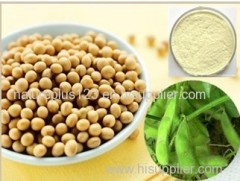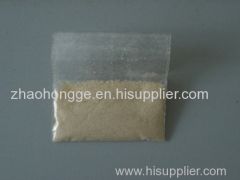.gif)
soybean extract
Company Profile
| Location: | China (Mainland) |
|---|---|
| Business Type: | Manufacturer |
Product Detail
| Brand Name: | bingren |
|---|
Product Description
1. Sources and Habitat
Asia long before written records. They remain a major crop in China, Japan, and Korea.
2. Descriptions and Specifications of Product
Specification: 10~40% Isoflavones HPLC
Soybean isoflavones contains: Daidzin, Daidzein, Genistin, Genistein, Glycitin, Glycitein
Constitutional Formula:

3. Indicatons and Uses
Soybeans also contain the isoflavones genistein and daidzein, types of phytoestrogen, that are considered by some nutritionists and physicians to be useful in the prevention of cancer and by others to be carcinogenic and endocrine disruptive. Soy's content of isoflavones are as much as 3 mg/g dry weight. Isoflavones are polyphenol compounds, produced primarily by beans and other legumes, including peanuts and chickpeas. Isoflavones are closely related to the antioxidant flavonoids found in other plants, vegetables and flowers. Isoflavones such as genistein and daidzein are found in only some plant families, because most plants do not have an enzyme, chalcone isomerase which converts a flavone precursor into an isoflavone.
4. Safety Concerns
Since soy isoflavones are derived from a plant, allergic reactions are possible. Stop using this herb if you develop a rash. You may want to see your health care professional, or inform them that this occurred.
Different brands of soy isoflavones might contain different amounts of active ingredient. It is recommended that you use a brand from a reliable manufacturer and one that has been standardized. A standardized product is more likely to contain the same amount of herb from dose to dose. Your health care professional or pharmacist can assist you in finding a product.
The information above come from the internet, for more information, please consultant







